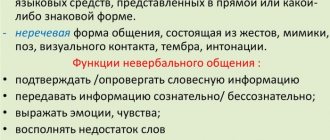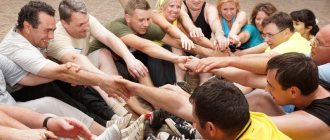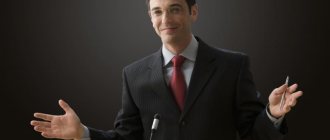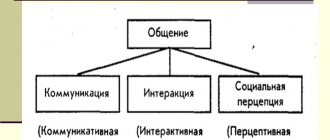Under the influence of the feelings experienced by a person, coordinated contractions and relaxations of various facial structures are born. They determine facial expressions that perfectly reflect the emotions being experienced. Since it is not difficult to learn to control the state of the facial muscles, they often try to mask or even imitate the display of emotions on the face. Knowing facial expressions during various emotions is useful not only for understanding others, but also for carefully practicing your working imitations.
The sincerity of human emotions is usually indicated by symmetry in the display of feelings on the face, while the stronger the falsehood, the more the facial expressions of its right and left halves differ.
Even easily recognizable facial expressions are sometimes very short-lived (fractions of a second) and often go unnoticed; To be able to intercept it, you need a lot of practice or special training. At the same time, positive emotions (joy, pleasure) are recognized more easily than negative ones (sadness, shame, disgust). A person’s lips are particularly emotional, and they are not difficult to read: for example, increased facial expressions or biting of lips, for example, indicate anxiety, and a mouth twisted to one side indicates skepticism or ridicule.
A smile on the face usually shows friendliness or a need for approval. A smile for a man is a good opportunity to show that he is in control of himself in any situation. A woman's smile is much more truthful and more often corresponds to her actual mood. Since smiles often display different motives, it is advisable not to rely too much on their standard interpretation:
- excessive smiling - need for approval;
- a crooked smile is a sign of controlled nervousness;
- a smile with raised eyebrows - readiness to obey;
- smiling with lowered eyebrows - showing superiority;
- a smile without lifting the lower eyelids is insincerity;
- a smile with constant widening of the eyes without closing them is a threat.
Typical facial expressions that communicate emotions are:
- joy: the lips are curved and their corners are pulled back, small wrinkles have formed around the eyes;
- interest: eyebrows slightly raised or lowered, while eyelids slightly widened or narrowed;
- happiness: the outer corners of the lips are raised and usually pulled back, the eyes are calm;
- surprise: raised eyebrows form wrinkles on the forehead, the eyes are widened, and the slightly open mouth has a rounded shape;
- disgust: eyebrows are lowered, the nose is wrinkled, the lower lip is protruded or raised and closed with the upper lip, the eyes seem to be squinting; the person seems to be choking or spitting;
- contempt: the eyebrow is raised, the face is elongated, the head is raised as if a person is looking down at someone; he seems to distance himself from the interlocutor;
- fear: the eyebrows are slightly raised, but have a straight shape, their inner corners are shifted and horizontal wrinkles run across the forehead, the eyes are widened, with the lower eyelid tense and the upper one slightly raised, the mouth can be open, and its corners are pulled back, stretching and straightening the lips above the teeth (the latter just speaks of the intensity of the emotion...); when only the mentioned position of the eyebrows is present, then this is controlled fear;
- anger: the muscles of the forehead are shifted inward and downward, creating a threatening or frowning expression in the eyes, the nostrils are widened and the wings of the nose are raised, the lips are either tightly compressed or pulled back, taking a rectangular shape and exposing clenched teeth, the face often turns red;
- shame: the head is lowered, the face is turned away, the gaze is averted, the eyes are directed downwards or “run” from side to side, the eyelids are covered and sometimes closed; the face is quite flushed, the pulse is rapid, breathing is intermittent;
- grief: eyebrows are drawn together, eyes are dull, and the outer corners of the lips are sometimes slightly lowered.
Knowing facial expressions during various emotions is useful not only for understanding others, but also for carefully practicing (usually in front of a mirror) your working imitations.
Basic definitions
Interesting. Psychologists have come to the conclusion that facial expressions, gestures, postures and intonations not only allow you to better understand the essence of what is being said, but also help form a general impression of your communication partner.
Gestures and facial expressions are an independent section in psychology. Its main concepts are:
- Facial expressions in psychology are the expression of an emotional state through a smile, raising eyebrows, squinting eyes, clenching the jaw.
- Gestures in the psychology of communication are body movements with the hands, head, and whole body. In some cases, gestures can replace words.
- Pose is a certain position of the body in space, which an individual chooses depending on his comfort, conversation situation, and emotional state.
- Physiognomy is the ability to recognize the individual characteristics of an interlocutor by his facial features, gestures, and facial expressions. Specialists are able to determine by facial expression not only the psychological characteristics of a person, but also his state of health.
Important! Facial expressions and gestures play an important role in interpersonal relationships. While men and women can partially control their gestures, this is not yet available to a child, which is why babies do not know how to deceive.
The concept of nonverbal communication in psychology
Gestures, facial expressions, pantomimes (as means of communication) are methods of non-verbal contact or a way of speaking without the help of words. In many materials on this topic, the definitions of nonverbal behavior, communication and communication are used as synonyms, but experts share these concepts that are close in meaning.
Nonverbal communication expresses the emotional states of those in contact and the nature of their communication. It includes non-verbal codes, signs and symbols independent of the social and psychological properties of the individual, which significantly increase the accuracy of the transmitted information.
Nonverbal behavior consists of body movements, gestures, glances, facial expressions and pantomimes that can show a person's attitude, reaction or signal something.
Non-verbal communication combines behavior and communication as the main ways of influencing an interlocutor, establishing interaction with him, creating an image and idea of a partner.
These means of information exchange, which include gestures, facial expressions and pantomime, are also called:
- natural;
- primary;
- secondary;
- artificial languages.
Psychology of facial expressions and gestures, types and meaning
Low self-esteem in a person from a psychological point of view
Facial expressions, psychology of gestures have many descriptions of what they mean. The position of the body and hands in space during communication, the characteristics of handshakes, head movements and facial expressions are frequently used emotional gestures and people observe them in the process of interpersonal communication every day.
Torso bends
Attention! In interpersonal communication, body tilt is always a bodily reaction to a signal from the brain. This is how the brain gives an impulse about the need to protect itself. Therefore, such reactions cannot be feigned.
Standing torso position
If people communicate while standing, then you can notice multiple changes in the position of the interlocutors’ torso. When a person sits with his elbows on the back of a chair or armchair, his body does not send as many nonverbal signals.
If the person you are talking to is genuinely interested in what you are saying, he will lean forward from time to time, fearing that he will miss something important. When a person talks about his successes, he involuntarily straightens his shoulders and his torso bends forward.
Proud of myself
When in a large company, a person unconsciously tilts his torso towards the one he likes most. If he finds himself in an unfamiliar company or feels a cool attitude towards himself from the majority of those present, his torso will shrink (he will pull his head into his shoulders, slouch) - he wants to become smaller, more inconspicuous. This is how the body tries to protect itself from potential threats.
Hand position
If a person crosses his arms over his chest, this indicates his need to conserve his energy. This pose will be called closed. Psychological science says that when a person finds himself in an unfamiliar place, he feels uncomfortable, so he wraps his arms around his shoulders. In addition, crossing your arms over your chest is a sign of a negative attitude towards your interlocutor or doubt.
Attention! Using this gesture may be a sign of deception. If an adult is deceiving, the pattern of using this gesture may be erased: rubbing the wrist, pressing a book to the chest.
The sight of clasped fingers indicates hostility or disappointment. Moreover, the degree of severity of negative feelings is directly related to how high the clasped hands are located. In addition, if a person has something to hide, then during communication he may keep his hands deep in his pockets.
When a person is worried about something, trying to restrain the storm of feelings that overcomes him, he clasps the forearm or wrist of the other hand behind his back with one hand. By hiding his hands, the individual tries to hide stress.
Head Gestures
A mimic nod of the head is regarded as an alternative to a positive answer. Shaking your head means disagreement and a negative response.
Attention! The verbal response may not correspond to the head movements. If a person agrees with the interlocutor, but at the same time shakes his head from side to side, you need to believe not the words, but the non-verbal language.
Facial expression
Facial expressions, psychology of emotions, and mood are closely interrelated. Observing changes in facial expression during a conversation allows you to understand how your partner feels about the conversation.
Additional Information. A person can hold back laughter or tears, that is, hide joy or resentment or disappointment from others. But people cannot control the movements of their eyebrows, so they cannot hide surprise, fear or anger.
Fear
Handshakes
In Russia, a handshake is used as a greeting when meeting, and as a farewell when finishing communication. This gesture is also used in the official business sphere when congratulating someone on a particular professional achievement.
The owner of a strong will has a strong handshake; for this action he holds his hand palm down. Unconfident people use a limp handshake, giving their hand palm up. A weak handshake indicates that the interlocutor is trying to keep distance in the relationship.
Communication nonverbal communication
Psychologists mainly study nonverbal means of information exchange, but there are also narrower specializations. For example, a discipline dedicated to body language is kinesics, although its research is divided into separate areas that study signal movements, gestures of the limbs and head, postures and facial expressions.
Nonverbal communications are widely used in the media, sports, politics, marketing, business, theater, advertising, pedagogy, and they are also in demand in the work of government law enforcement agencies.
The mechanism that combines types of non-speech information exchange to give them some meaning is called coding.
It has the following characteristics:
- Certain codes of nonverbal communications are universal, as they are determined by human biological development. These include physiologically based emotional reactions and threat signals.
- Meanings in coding can be expressed through voice, body, face and other means of non-verbal communication.
- Messages in nonverbal encoding should provoke an automatic reaction without thinking (for example, reacting to a traffic light changing colors).
- Nonverbal signs may occur involuntarily, examples include spontaneous blushing, muscle tension, and similar reactions.
- Means of non-verbal communication are equal to verbal dialogue. Communication through them occurs through body movements and other means of human expression, as well as elements of the environment.
Personal space, communication areas
What kind of mood does a person have - types in psychology
To feel comfortable and free to use gestures, you need personal space. All people react differently to invasion of personal space. Anxious people tend to maintain a greater distance in communication. Confident individuals are less concerned about protecting their personal space. Aggressive people constantly try to expand their personal zone: their gestures are sweeping, and their poses are such as to take up as much space as possible.
Psychologists have calculated optimal zones for different types of interpersonal communication:
- An intimate area that involves physical contact. Its distance is from 15 to 45 cm. Only the closest people are at this distance.
- The personal zone is 75-120 cm. It is used in everyday communication with friends.
- Social zone – from 120 to 360 cm. At this level, official business communication is carried out.
- The public area is needed for lectures. Its level is 3.5-7.5 m.
How does the behavior of a lying person manifest itself?
- Often, after telling a lie, the following gestures are observed - loosening a tie, touching the neck, nose, covering the mouth. They often hide their hands during a conversation and may fidget or sway, which indicates anxiety. The opposite behavior also happens - they stand motionless, as if petrified, without showing emotions. They gesture a little, because the brain is busy inventing and controlling the telling of the story.
- Position of the legs - they can swing their legs, showing nervousness, impatience, often the legs are facing in the other direction from the interlocutor. They can make sudden movements with their shoulders, touch the interlocutor, trying to “earn their way into trust.”
- Facial expressions - they hide their gaze, look in the other direction, have a darting gaze, or vice versa do not avert their gaze, look straight at them. The smile is usually strained, unnatural, only movement of the lips, and no changes are visible in the corners of the eyes. Frequent blinking also expresses nervousness or a desire to hide information or feelings.
- Speech - usually spoken in a calm tone, giving meaning to words. They may raise their tone when they are bragging or in an excited state. Usually, a change in the tone of speech does not happen by accident; watch the tone and words. They may stammer, “moo,” make other sounds, and lose their thoughts.
How to recognize truth and lies from a person
Purple color in human psychology - what does it mean who likes it?
It is quite simple to recognize a person’s sincerity or deception by facial expressions and gestures:
- When people tell the truth, they look the other person in the eyes, their palms are open and visible. The person turns his whole body towards the interlocutor, the soles of his feet are also directed towards the communication partner. The pace of his speech is calm and even.
- If a person is deceiving, he will avoid eye contact. During the conversation, he will turn away from the interlocutor, touch his face (adjust his glasses, touch his nose, cover his mouth with his hand). His speech will be confused.
Interesting. When little children lie, they cover their mouths with their hands because they know that lying is wrong. Adults have great control over their body, so the desire to stop the flow of false speeches manifests itself in an erased form: touching various parts of the face.
Deceives
Rules of interpretation
There are general rules for “reading” body language:
- it is necessary to take into account the person’s age, profession, position and social status: for example, a child has few gestures, but more facial expressions, while an adult has highly developed gestures;
- abundant gestures or their absence does not always mean that a person is too emotional or, conversely, cold. Highly educated people with large vocabularies do not need excessive gestures to express themselves;
- lack of synchrony between speech and non-verbal language indicates unreliable information.
These are the basic rules. They must be known and observed when “reading” the opponent’s personality.
Features of foreign language of facial expressions and gestures
Abroad, the language of facial expressions and gestures, understandable to the residents of Russia, is transformed and modified. When planning a trip to a particular country, you must definitely study the meaning of non-verbal signals in this country, since the same gestures in different countries can be interpreted differently.
For example, hugging and kissing when meeting in England is regarded as vulgar behavior. By tapping his finger on his nose, the Englishman emphasizes that his words are secret information. A clenched fist with the index finger raised is considered an offensive gesture in England.
If in Holland a person twirls his finger at his temple during a conversation, he emphasizes the wit of his interlocutor. Rubbing the back of his nose, the Dutchman talks about greed.
The French express their admiration for something by blowing a kiss. If a Frenchman pulls his lower eyelid down with his index finger, he expresses doubt in the words of his interlocutor. In France, distrust of a person is expressed by rubbing the bridge of the nose.
Thus, in the psychology of communication, human facial expressions and gestures play an important role. They make communication interesting and help distinguish truth from lies. Knowledge of the facial expressions and gestures of other countries will help you avoid awkward situations when communicating with foreigners.
Communication with foreigners
The importance of sensorimotor signals
The ability to correctly interpret nonverbal signals is of great importance in modern human life. After all, it is precisely such gestures that most fully express human feelings and experiences. In some cases, emotional experiences can be so strong that without verbal signals it is almost impossible to convey the whole gamut of overwhelming emotions. In addition, these gestures allow you to establish deeper communication contact between interlocutors.
Often, such knowledge allows one to achieve certain results in entrepreneurial activity. The main feature of nonverbal signals is that a person cannot control them. Examples of using such means of communication allow you to learn to detect false notes in the words of your interlocutor and avoid attempts to manipulate your behavior.
A person who knows the basics of nonverbal communication better understands the interlocutor, which allows him to distinguish lies from the truth.
Gestures warning of aggression
It is important to recognize gestures of aggression and threats in a timely manner - this makes it possible to prevent a conflict in time and get away from the direct line of attack of the interlocutor. An aggressive attitude manifests itself:
- Clenching your fists. The interlocutor speaks in a calm tone, his posture is relaxed, but his hands are constantly clenched into fists - a clear signal of pent-up anger.
- Fists resting on the surface of the table, hips or pressed to the waist - a direct threat, readiness to attack.
- Hands hidden behind back. The person is literally trying to control himself and not show aggression.
- Pursed lips, tightly clenched jaws. They express contempt and dissatisfaction with the interlocutor.
- Scratching the back of the neck and the back of the head. Anticipation of attack, demonstration of readiness for defense.
If during a conversation a person twitches his upper lip, flares his nostrils, squints his eyes, he is ready for open confrontation, demonstrates superiority over his opponent, and threatens.










